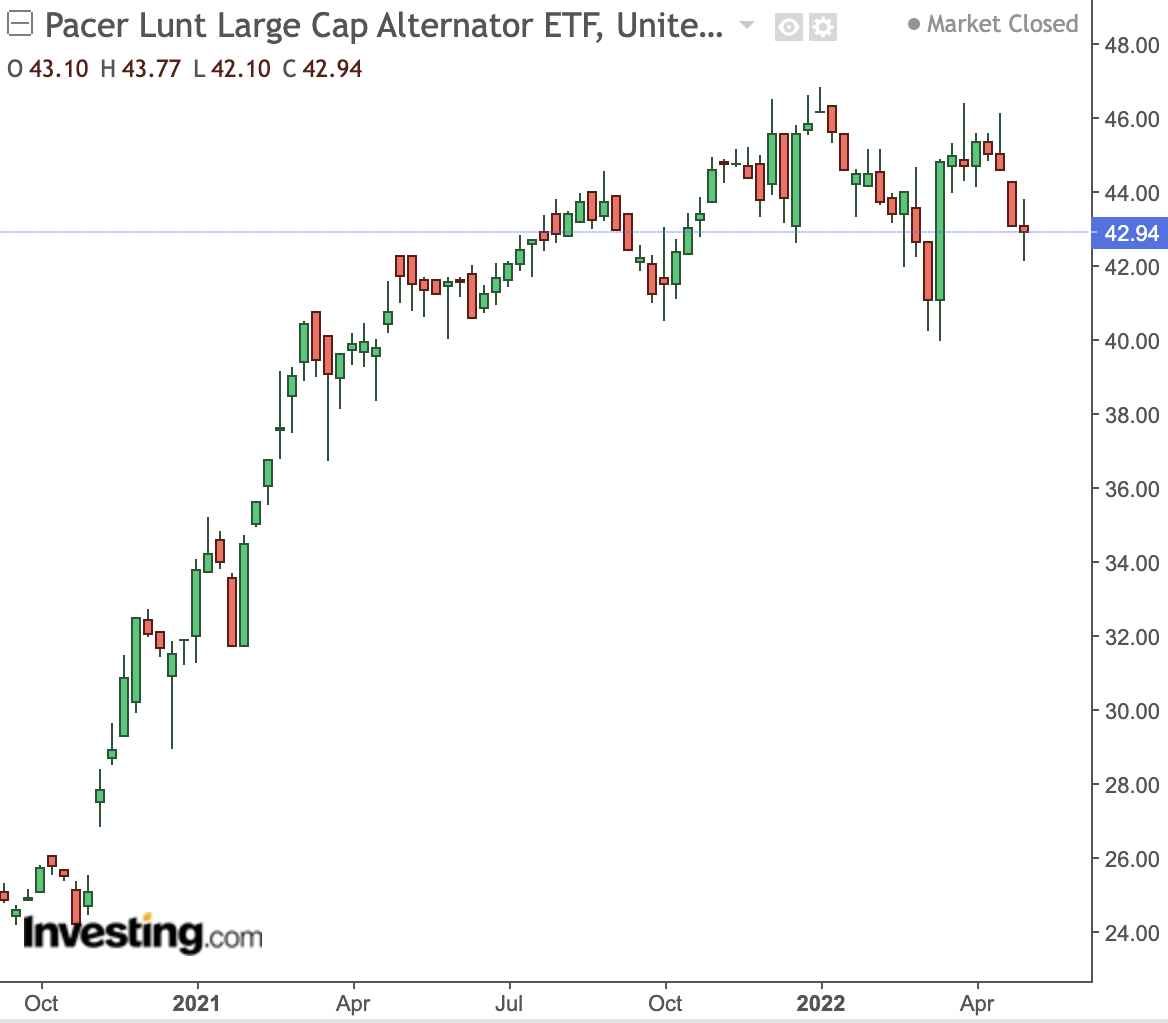On Apr. 4, the Federal Reserve (Fed) increased rates by half a percent. Following the announcement, the Federal Open Market Committee (FOMC) said:
“With appropriate firming in monetary policy stance, the Committee expects inflation to return to its 2 percent objective and the labor market to remain strong.”
Recent months have seen significant de-risking, especially among growth and tech stocks. However, analysts now predict that the panorama on Wall Street could soon improve, at least in the intermediate term.
Likewise, those who expect the Fed to not act aggressively in the coming months may expect a potential relief rally. They could especially be looking at stocks that have come under pressure since January. Therefore, today we examine an exchange-traded fund (ETF) for investors searching for high-return assets.
Risk And Return
Most readers know that the beta of an asset refers to the volatility of its returns compared to the broader market, which has a beta of 1.00.
For example, if an asset has a beta of 1.10, it is 10% more volatile than the market. Such a higher value would typically mean higher risk for investors who would aim for higher returns.
Put another way, stocks with higher volatility tend to do better than the market in bull markets. But the declines also get amplified during market slides or bear markets. Put another way, risk and return go together.
Let’s briefly compare the year-to-date (YTD) returns of several high beta stocks with that of the S&P 500, which represents the market and thus has a beta of 1.00. So far in the year, the index is down 12.8%.
- Amazon (NASDAQ:AMZN) - Beta of 1.22 and down 30.1% YTD;
- General Motors (NYSE:GM) - Beta of 1.19 and down 31.8%;
- Meta Platforms (NASDAQ:FB) - Beta of 1.39 and down 38%;
- Micron Technology (NASDAQ:MU) - Beta of 1.18 and down 23.5%;
- Netflix (NASDAQ:NFLX) - Beta of 1.28 and down 68.7%;
- Block (NYSE:SQ) - Beta of 2.36 and down 40.8%.
On a final note, the S&P 500 High Beta Index is down 8.9% since January. This index measures the performance of 100 stocks from the S&P 500 index that are most likely to be sensitive to market moves.
And on the other hand of the spectrum, we see the S&P 500 Low Volatility Index, which has lost 3.4% YTD. This index tracks the returns of the 100 least volatile shares in the S&P 500 index.
Two ETFs give access to stocks in these two indices separately. They are:
- Invesco S&P 500 High Beta ETF (NYSE:SPHB) - down 13.1% YTD
- Invesco S&P 500 Low Volatility ETF (NYSE:SPLV) - down 5.1%,
Here’s an ETF for investors looking for potentially leveraged returns in the weeks ahead.
Pacer Lunt Large Cap Alternator ETF
- Current Price: $42.94
- 52-week range: $39.93 - $46.83
- Dividend yield: 0.99%
- Expense ratio: 0.60% per year
The Pacer Lunt Large Cap Alternator ETF (NYSE:ALTL) follows a rules-based strategy that is revised monthly. It invests in 100 US stocks, rotating between the S&P 500 High Beta Index and the S&P 500 Low Volatility Index, which we have introduced above.
Some of the information on the actual strategy is proprietary. However, we can infer that fund managers invest in low volatility stocks during market downturns but stands ready to review the holdings.

ALTL started trading in June 2020, and net assets stand at $574 million. About half of the stocks come from the information technology (IT) sector. Next, we see consumer discretionary (16.8%), industrial (8.1%), energy (6.8%), and health care (6.3%) names. They are all large-capitalization (cap) companies.
The top 10 stocks account for close to 13% of the portfolio. Among those are Hershey (NYSE:HSY), Coca-Cola (NYSE:KO), Johnson & Johnson (NYSE:JNJ), Southern (NYSE:SO), PepsiCo (NASDAQ:PEP), and Procter & Gamble (NYSE:PG).
The fund is down to 6.3% year to date but has returned about 4.1% over the past 12 months. Readers looking for a trend-following momentum strategy should consider researching ALTL further.
